Where is Botswana?
About Botswana
The Land
The People
Life and Death
Health, Energy and the Environment
Education and Work
Travel, Communication and the Media






Back to the Flags of Africa page

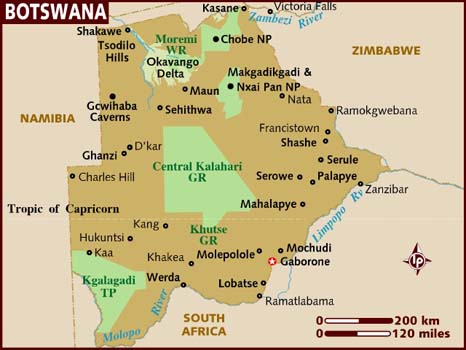


Botswana is a large country in southern Africa.
Botswana is a landlocked country with no coastal borders.
The land is mostly flat with the Kalahari Desert in the south west.
The geographical coordinates for the centre of Botswana, also known as lines of latitude and longitude, are:-
Latitude - 22 00S
Longitude - 24 00E
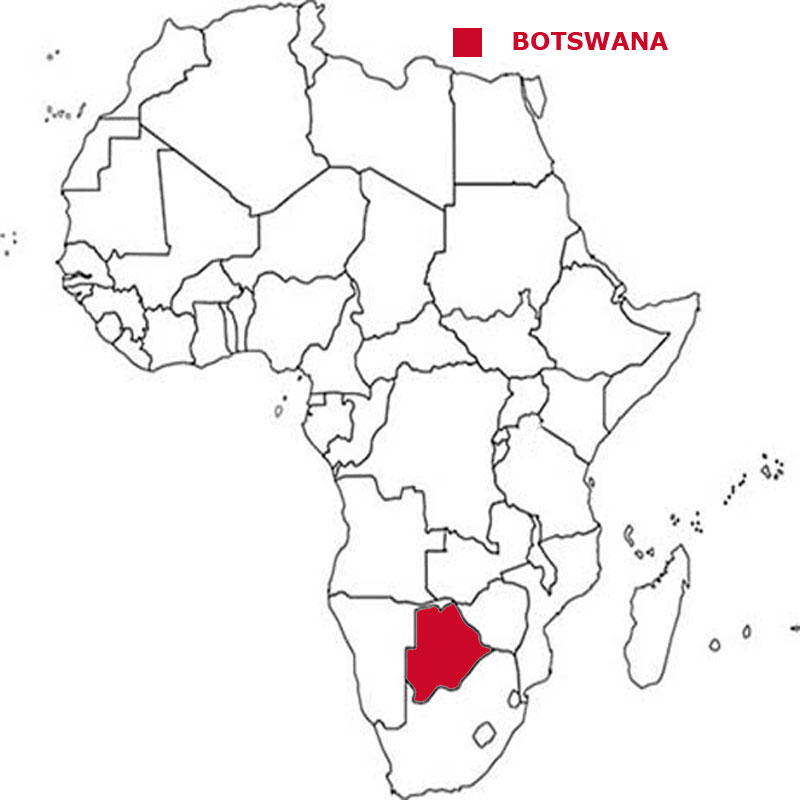

Check the weather at the international airport now. It is about 10kms north of Gaborone.
This is the time in Gaborone now
 The Botswana flag is light blue with a horizontal white-edged black stripe in the centre. The blue symbolizes water in the form of rain, while the black and white
bands represent racial harmony
The Botswana flag is light blue with a horizontal white-edged black stripe in the centre. The blue symbolizes water in the form of rain, while the black and white
bands represent racial harmony
Botswana is a parliamentary republic with a president as head of state and head of the government.
In elections everyone over the age of 18 can vote.
The currency in Botswana is the pula. Botswana is a member of the Commonwealth.
English is the official language.
Hear the National Anthem
These are the anthem words
We have already written our own history of England but are asking schools in Botswana to provide us with a detailed history of
their own country. Check how here.
![]()
![]() Back to the top
Back to the top

The total land area of Botswana is 566,730 sq kms which is the 23rd largest in Africa.
Botswana has lakes, rivers and canals which total 15,000 sq kms.
Botswana has boundaries with 4 countries
- South Africa 1,969 kms
- Namibia 1,544 kms
- Zimbabwe 834 kms
- Zambia 0.15 kms
Botswana has no coastline.
The highest point in Botswana is Tsodilo Hills at 1,489 metres.
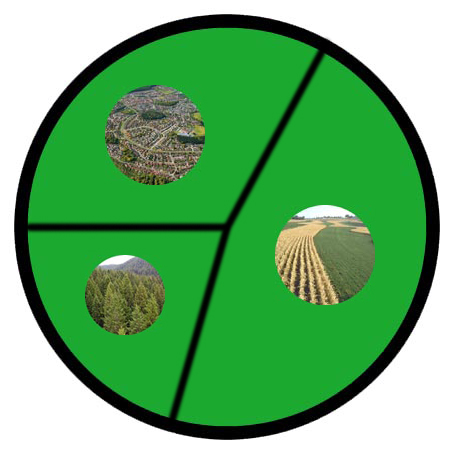

The total population of Botswana is 2.25 million people, making it the 42nd largest country in Africa by population.
Of this number 1.17 million are females and 1.08 million are males.
A person from Botswana is called a Motswana.
To be a citizen of Botswana, one of your parents must be a citizen of Botswana. It is not sufficient to be born in Botswana. You have to live in Botswana for
10 years before you can begin to apply for citizenship.
The largest five cities in Botswana, by population are:-
- Gaborone 208,411 people
- Francistown 89,979
- Molepolole 63,248
- Selebi-Phikwe 53,727
- Maun 49,945
 Each little Owlbut is 1 person and
the big yellow rectangle is 1 sq km. After a while you can compare countries and see which ones are the most crowded. Remember it is only an average as
more people live closer together in towns and cities than in villages out in the country.
Each little Owlbut is 1 person and
the big yellow rectangle is 1 sq km. After a while you can compare countries and see which ones are the most crowded. Remember it is only an average as
more people live closer together in towns and cities than in villages out in the country.
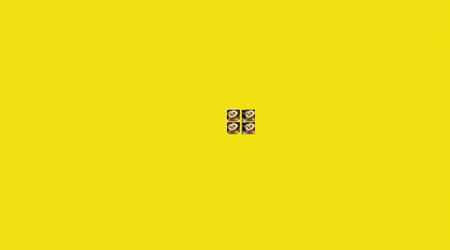
69.4% of the people live in cities or towns.

The birth rate in Botswana is 21.7 births per 1,000 of population
The death rate in Botswana is 9.5 deaths per 1,000 people.
Check this against the birth rate. If the death rate is higher than the birth rate then
the population will decrease unless immigrants arrive in the country.
There are 26.0 deaths of girls under 1 year per 1,000 of births and 31.2 deaths of boys.
The median age for females is 26.0 and for males is 23.8. The median age is that age which divides the population exactly in half so there are the same number
of people above the median age as below it.
We have no figures for the average age of a woman when she has her first child.
The elderly dependency ratio is 5.8. This is the number of elderly people (ages 65+) per 100 people of working age (ages 15-64).
The potential support ratio is 17.3. This is the number of working-age people (ages 15-64) per one elderly person (ages 65+). As a population ages, the potential support ratio tends to fall, meaning there are fewer potential workers to support the elderly.
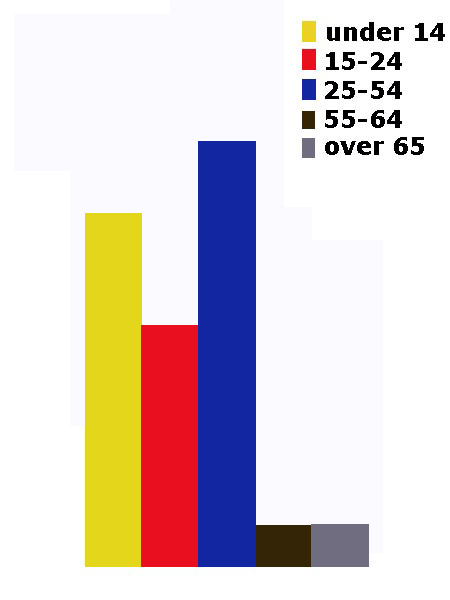
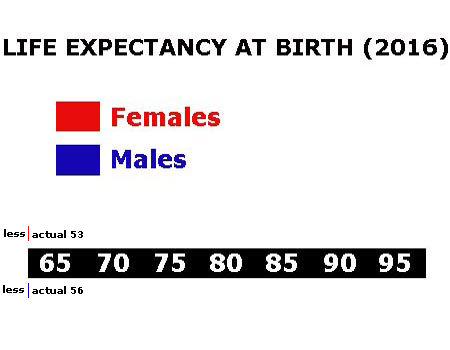

Botswana spends 5.4% of its total income on health care.
There are 0.37 doctors per 1,000 people.
There are 1.8 hospital beds per 1,000 people.
18.9% of the population are estimated as obese.
99.2% of the urban population and 92.3% of the rural population have drinking water that is either piped into their home or they have access to a public tap, a protected borehole, well, spring or
protected rainwater collection facility.
78.5% of the urban population and 43.1% of the rural population have access to a flushing toilet that is connected to a sewer, a pit latrine (that is a
permanent hole in the ground that is looked after) or a composting toilet.
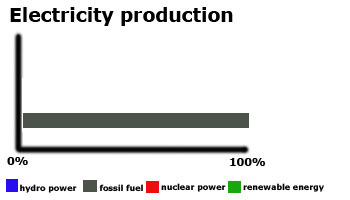
Botswana releases 4.4 million metric tons of carbon dioxide by burning fossil fuels in the process of producing and consuming energy. This puts it as the 22nd highest in Africa.

Botswana spends 9.6% of its total income on education.
Children usually start school at age 6 in Botswana. Primary education is for seven years until age 13, although not compulsory, and secondary education
can continue till 18. This may be followed
by further education at a university or college.
Generally the school year consists of 3 terms and starts in the middle of January and finishes at the beginning of December. There is usually a 2 week
break in the middle of April and July and a 1 week break at the end of September.
88.9% of females and 88.0% of males are able to read and write by the age of 15.
36.0% of all people aged between 16 and 24 are not in work. Among females 43.5% are unemployed while with males 29.6% can't find work.
The total number of people available for work in Botswana is 1.18 million.
We have no figures for which sector they work in.
20.0% of the workforce are unemployed.

There are 10 paved airports in Botswana, which is the 19th highest number in Africa.
![]()
There are 888 kilometres of railways in Botswana, the 20th longest in Africa.
![]()
There are 17,916 kilometres of roads in Botswana, which means Botswana is in 28th place for the most kilometres of roads in Africa.
![]()
There are 2 major national newspapers in Botswana.
There are 3.24 million mobile phone users.
6% of the people have a fixed landline.

869,610 people have access to the internet at home via any device (computer or mobile).


